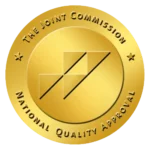Bipolar I disorder is a mental health condition marked by extreme mood swings, ranging from intense highs (mania) to deep lows (depression). During manic episodes, individuals may feel overly energetic and impulsive, while depressive episodes bring feelings of sadness and hopelessness.
These mood swings can disrupt daily life, relationships, and work. Treatment typically involves prescription drugs and therapy to help manage symptoms, enabling individuals to lead more stable and fulfilling lives. Seeking professional help is vital to manage symptoms effectively.
Key Takeaways
Bipolar I Disorder is marked by extreme mood swings, ranging from intense highs to deep lows. Here’s what you need to know:
- Distinguishing between bipolar types, such as bipolar I and bipolar II, is crucial for accurate diagnosis.
- Various factors contribute to the onset of bipolar I disorder.
- Clinical features, including manic and depressive episodes, guide professionals in diagnosing this condition.
The Haven Detox-Little Rock is here to help you overcome mental disorders. Call us today at (501) 271-3342 for more information.

Distinction Between Bipolar I Disorder and Other Types
Bipolar disorder comprises three main types: bipolar I, bipolar I, and cyclothymic disorder, both affecting people’s lives differently. In bipolar I, individuals experience full-blown manic episodes, marked by extreme highs, and often need hospitalization. They may also have depressive symptoms. On the other hand, bipolar II involves hypomanic episodes, which are less severe than full mania, and depressive episodes.
While both share similarities in symptoms like major depressive disorder, bipolar II is typically less intense and less disruptive to daily life. Brain structure variations contribute to both types of bipolar disorder, categorized under mental illness.
Another type is cyclothymic disorder, which involves chronic mood swings characterized by numerous periods of hypomanic symptoms and depressive symptoms. Individuals with cyclothymia do not experience major depressive episodes that meet the full criteria for bipolar I or bipolar II disorder.
Clinical Features of Bipolar I Disorder
Distinctive clinical features, including manic episodes, depressive episodes, and periods of average mood, characterize bipolar I disorder. Understanding each phase’s signs, symptoms, durations, and severity is crucial for effective management.
Manic Episode
During a manic episode, individuals may experience elevated or irritable moods, high energy levels, and intense mood changes. They may engage in impulsive behaviors, have a decreased need for sleep, and exhibit a heightened sense of self-importance. These symptoms significantly impact a person’s ability to function.
A full manic episode lasts at least one week, with symptoms severe enough to disrupt daily life. If left untreated, episodes can persist and escalate. That may pose a higher risk for adverse consequences, including strained relationships and difficulties at work or school.
Depressive Episode
Episodes of depression in bipolar I disorder are marked by consistent feelings of sadness, hopelessness, and a lack of interest in activities that you were previously passionate about. Significant weight loss, changes in sleep patterns, and thoughts of death or suicide may also occur. These symptoms contribute to the severity of the episode.
A major depressive episode typically lasts for at least two weeks. The severity varies, impacting the person’s mood, energy levels, and overall functioning. Individuals may withdraw from social activities, struggle with daily tasks, and experience a profound sense of despair.
Period of Normal Mood
In between mood episodes, individuals with bipolar I disorder may experience periods of normal mood. These intervals are crucial for stabilizing mental health. Identifying triggers, seeking support from family members, and addressing lifestyle factors are priorities during these periods.
Such preventive measures can avert the recurrence or worsening of manic or depressive episodes. Understanding the main features of bipolar disorder aids in tailoring interventions for effective long-term recovery during mental health treatment.
Factors Causing the Onset of Bipolar I Disorder
Understanding these causes is crucial for effective management. Recognizing genetic, environmental, and neurological factors helps craft treatment plans to address the unique needs of a patient grappling with the challenges of bipolar I disorder.
Genetic Factors
Certain genes and family history play a vital role in the development of bipolar I disorder. People with a family history of the condition are more likely to experience it. Research suggests a strong genetic component in bipolar disorder. Individuals with a family history of bipolar disorder are at a higher risk of developing the condition themselves. However, not everyone with a family history will necessarily develop bipolar disorder.
Environmental Influences
Environmental factors also contribute to the onset of bipolar I disorder. Stressful life events, trauma, or significant changes in a person’s life can trigger manic or depressive episodes. Substance use disorders and other mental disorders may further amplify the risk, emphasizing the interplay between genetic predisposition and environmental triggers.
Neurological Factors
Neurological factors involving brain structure and function are implicated in bipolar I disorder. The imbalance of neurotransmitters and alterations in brain circuits contribute to mood dysregulation, leading to manic depression. Additionally, conditions such as attention deficit hyperactivity disorder (ADHD) may coexist, influencing the manifestation of bipolar symptoms.
Diagnosing Bipolar I Disorder
Bipolar I disorder, also known as manic-depressive illness, requires a careful diagnosis by mental health professionals to ensure proper treatment. Clinical assessment, diagnostic criteria, and medical tests are vital in accurately identifying this condition.
Clinical Assessment and Diagnostic Criteria
In diagnosing bipolar I disorder, mental health professionals conduct a clinical assessment. That involves observing mood states, recognizing symptoms of mania, and assessing the risk of severe mood swings. Late adolescence is a common period for the disorder’s onset, and individuals with a family history face an increased risk.
Specific diagnostic criteria help professionals identify bipolar I disorder. These criteria include manic episodes characterized by elevated mood, increased energy, and, sometimes, psychotic symptoms. Proper diagnosis also considers milder symptoms of mania and low moods, ensuring a comprehensive understanding of the patient’s mental health.
Medical Tests and Psychiatric Evaluation
Medical tests and psychiatric evaluations play a crucial role in confirming the diagnosis. While there are no specific tests for bipolar I disorder, a comprehensive psychiatric evaluation, including a discussion of family history and a physical examination, helps rule out other conditions. Understanding brain function is essential, as abnormalities in the brains of people with this disorder may be observed.
Seeking Help and Treatment
If individuals experience symptoms like severe mood swings, suicidal ideation, or anxiety, seek help from a counselor or mental health care professional promptly. Early intervention and an accurate diagnosis enable the implementation of proper treatment plans, improving the overall well-being of individuals with bipolar I disorder.
Medication for Bipolar I Disorder
The treatment of Bipolar I Disorder often involves medications to manage mood swings and stabilize emotions.
Mood Stabilizers: These drugs help control extreme mood changes, preventing longer periods of mood instability.
Antipsychotics: These drugs are prescribed to manage symptoms during the manic phase of bipolar I disorder, addressing severe mood swings and psychotic features.
Antidepressants: These prescriptions are used cautiously during depressive episodes, combined with mood stabilizers to prevent triggering manic phases.
These medications play a vital role in easing symptoms, reducing thoughts of self-harm, and maintaining stability. Seeking medical advice ensures proper medication choices for effective management of Bipolar I Disorder.
Therapeutic Approaches for Recovery
Bipolar disorder, characterized by severe mood swings between depressive lows and manic highs, requires a multifaceted approach for effective management. Here are two therapeutic approaches to treating bipolar I disorder
Cognitive Behavioral Therapy (CBT)
CBT is a type of talk therapy that helps people with bipolar disorder by focusing on thoughts and behaviors. In simple terms, it teaches individuals how to identify and change negative thoughts, develop better coping skills, and solve problems.
By doing this, CBT aims to stabilize mood swings and reduce the chances of the disorder coming back. It can also address issues like taking medication regularly, managing sleep problems, and improving relationships.
Electroconvulsive Therapy (ECT)
Electroconvulsive Therapy (ECT) is a mental health treatment provided at an outpatient or residential facility. It is used when bipolar disorder is very severe or hasn’t responded well to other therapies. It involves passing a small electrical current through the brain during the session to induce a controlled seizure.
While it may sound dangerous, ECT is considered safe and effective in specific situations. It is often used in emergencies or when rapid relief is necessary. However, it can have side effects like short-term memory loss and cognitive issues, so its use is carefully considered based on the individual’s needs and circumstances.
Lifestyle Changes to Manage Bipolar I Disorder
For individuals grappling with the symptoms of bipolar disorder, incorporating lifestyle changes is pivotal. Prioritizing consistent sleep patterns, maintaining a healthy diet plan, and engaging in regular exercise or meditation can help stabilize a person’s mood. Join local support groups to alleviate the symptoms of mood disorder. Minimizing stress through mindfulness practices and avoiding substance use is crucial in preventing intense mood swings.
Support from loved ones, understanding triggers for episodes of mania or depression, and open communication with healthcare professionals are key components. Recognizing signs of an irritable mood or a depressed mood can aid in timely intervention, reducing the risk of severe episodes and promoting overall well-being.
Frequently Asked Questions (FAQ)
What is the difference between bipolar I and II disorder?
Bipolar I disorder involves severe manic episodes, often requiring hospitalization, while bipolar II disorder features milder hypomanic episodes. Both include depressive episodes. In bipolar II, manic symptoms are less intense, and hospitalization is rare.
People with bipolar I may experience manic episodes in their teenage years, impacting daily life. Bipolar II, common in adulthood, might involve hypomanic episodes but rarely disrupt daily functioning.
What is typical bipolar behavior?
Typical bipolar behavior involves extreme mood swings, shifting between manic highs and depressive lows. The experts do not fully understand the exact reason for the occurrence of bipolar disorder.
However, it often involves a variety of genetic, biological, and environmental risk factors. There are different types of bipolar disorder, each characterized by specific patterns of mood episodes.
Can someone with bipolar I live a normal life?
Yes, with proper treatment and support, someone with a diagnosis of bipolar disorder can lead a normal life. Medications and therapy help stabilize the person’s mood, managing manic and depressive episodes.
People with bipolar disorder can improve their lives by making simple changes. Getting enough sleep and managing stress are important. Even though bipolar disorder brings challenges, many individuals live well and maintain relationships with proper care. It’s about finding what works best for each person and having support from loved ones.
Find Healing at The Haven Detox-Little Rock
Recovery is possible at The Haven Detox-Little Rock. Our team of medical experts understands your struggle and crafts a mental health treatment plan that includes counseling in a secure setting. We also provide residential rehab facilities if you or a loved one is looking for a supportive recovery environment. Call us today at (501) 271-3342 to speak with an admissions counselor.





